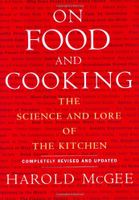Advertisement
Scotch and Irish Whiskies
By Harold McGee
Published 2004
There are three kinds of Scotch whisky. One, malt whisky, is made in the Highlands and islands entirely from malted barley. It’s distilled twice in pot stills to about 70% alcohol, and has a strong, distinctive flavor. Another, grain whisky, is less flavorful and less costly; it is made in the lowlands from various cereals and just a small portion (10–15%) of malted barley to convert their starches into sugars, and distilled in a continuous still to a neutral 95% alcohol. The third and most common is a blend of malt and grain whiskies, with grain whisky accounting for 40–70%. Such blending began in the 1860s for economic reasons, and turned out to produce a milder, more widely appealing drink just in time to replace brandy when the insect scourge phylloxera devastated European vineyards in the 1870s and 1880s. This is when Scotch developed its international reputation. Today, Scotch connoisseurs prize the distinctive “single-malt” whiskies produced by the few remaining small distillers of all-malt whisky.


